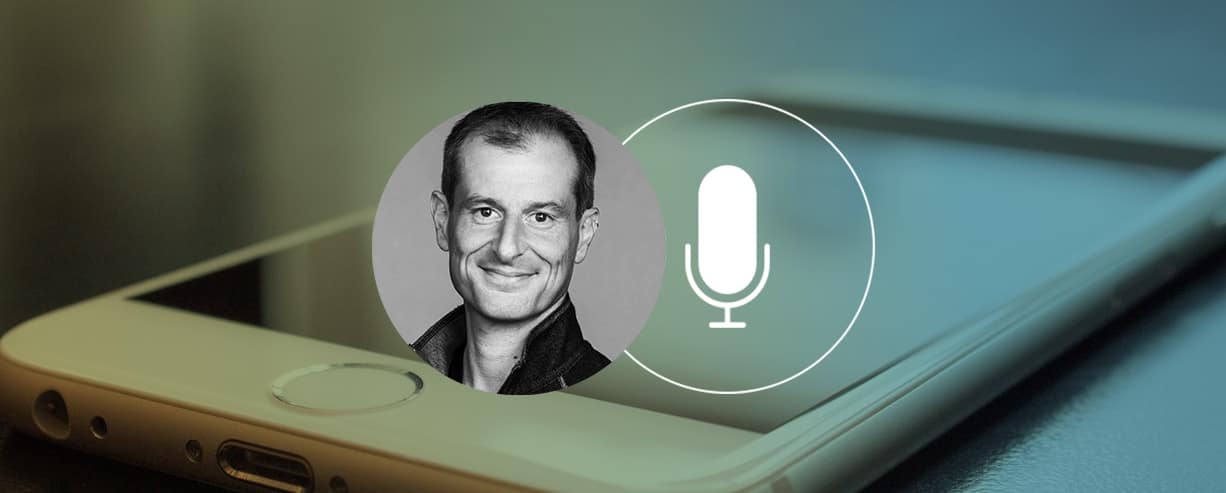
Interview with Salesforce’s SVP of Mobile, Paolo Bergamo on the Mobile First Podcast
- Podcast /
- Product Leadership /
- Product Management /
Leveraging Mobile to Provide Best-in-Class Customer Experience (Ep. 40)
Paolo Bergamo became a visiting professor at UCLA (EE dept) in 2002. He worked in the group of Leonard Kleinrock, the “father of the internet” who built the first three ARPANET nodes. Paolo then left Academia to join a mobile technology startup, called Sendia, based in Santa Monica, CA. Sendia became the first Salesforce acquisition in 2006. Since then Paolo has been the lead of mobile products for Salesforce. In 2008, the Salesforce Mobile app was the first business app ever in the iPhone App Stores. He’s currently SVP for Salesforce1 and Mobile, defining the mobile strategy and leading mobile product management.
How to get this week’s and past podcast episodes:
The Mobile First podcast is available for free on iTunes where you can easily download it straight to your computer or mobile device. We encourage you to subscribe to the Mobile First podcast on iTunes so you won’t miss an episode. If you are an Android user, you can also download the podcast for free through Stitcher. If you don’t have access through iTunes or your phone, you can download the podcast here or listen straight from the player below:
Here are the highlights of our conversation with our guest:
A combination of events and items shaped Paolo’s interest around communications and drove him towards mobile: as a young student he considered himself more of a mathematician until a teacher pointed out he was an engineer. His father working in the telco industry for 35 years in Italy, and Paolo was always obsessed with bundling and hiding all the different wires sticking out from his computers. This led him to explore mobile and wireless at an early age and encouraged an educational and career in electronics. He was very much inspired by his experience learning from Leonard Kleinrock – literally the father of the internet.
After two years in UCLA, he learned that he really enjoyed research, teaching and loved to be around young people who are passionate and want to learn. However, academic research was a little too lengthy, and provided almost no opportunity to productize inventions. In order to fulfill his calling as an engineer, he knew he needed to take an idea and actually get it out in front of people – get feedback from actual users and consumers.
The opportunity to join Sendia, a start-up building business tools for early-era mobile phones. They wanted to translate the most important business tools into mobile. The first web services started appearing in back end systems, like Salesforce. We built a middle layer between the web services API and the mobile phone. They built the apps for a mobile phone highly optimized for offline data communications.
It was a success, they were acquired by Salesforce and he became a product manager. In 2007, when the App Store was launched for 3rd party developers, Salesforce Mobile app caught Steve Jobs’ eye and Sendia received a phone call. It was a success once more and people started trusting him to manage the mobile strategies, product and platform more and more. Paolo shares that with all this he believes that rethinking mobile is the key to innovation.
Paolo talks about Salesforce’s legacy as one of the companies which built the cloud. They help customers to do business in a whole new way and enables companies to be smarter and more efficient. He believes that the mission of any large enterprise is to go back to the era where the quality of customer service is no less than excellent and they aim that they will be the platform which will enable businesses to do this.
As SVP of Mobile in Salesforce1, he is moving the needle towards their goal by mobilizing data, business processes and collaboration. They also have optimized applications, like Wave, should businesses need to slice and dice data. They are also enabling customers to build their own applications for their own customers through mobile platforms and SDKs. They have a low code, no code mantra wherein every time they build a piece of code or functionally, anyone can build an application in a visual way. All these applications are all connected as they are not stand alone applications and this is where he comes in as a product manager.
Discover the critical challenges they are facing include tactically deciding which devices that they will support out of the box and which ones to delegate to partners; the challenge of making it really easy for an intelligent admin to orchestrate events from multiple systems and channels in line with their low code, no code mantra; and having a center to cater all systems.
Rapid Fire Questions
- What is your definition of innovation?
Innovation is anything that freezes us from the mundane tasks and gives us back the time to do what we want.
- Would you put more emphasis on the idea or the execution? How would you weigh each of them and why?
30% idea and 70% execution. When you do things right and you execute well, you are going to be in a good position to give people your strategy in the moment in which your idea is not successful.
- What is your biggest learning lesson on your journey so far?
Adapting. What took you here will not take you there. You need to keep challenging yourself to scale and be less of a control freak.
- What is your favorite business book?
Multipliers: How the Best Leaders Make Everyone Smarter by Liz Wiseman
Crossing the Chasm by Geoffrey Moore
Escape Velocity by Geoffrey Moore
- What is your favorite digital resource?
Mobile First
Freakonomics
The Rubin Report
- What is your favorite app and why?
Slack
Fitbit